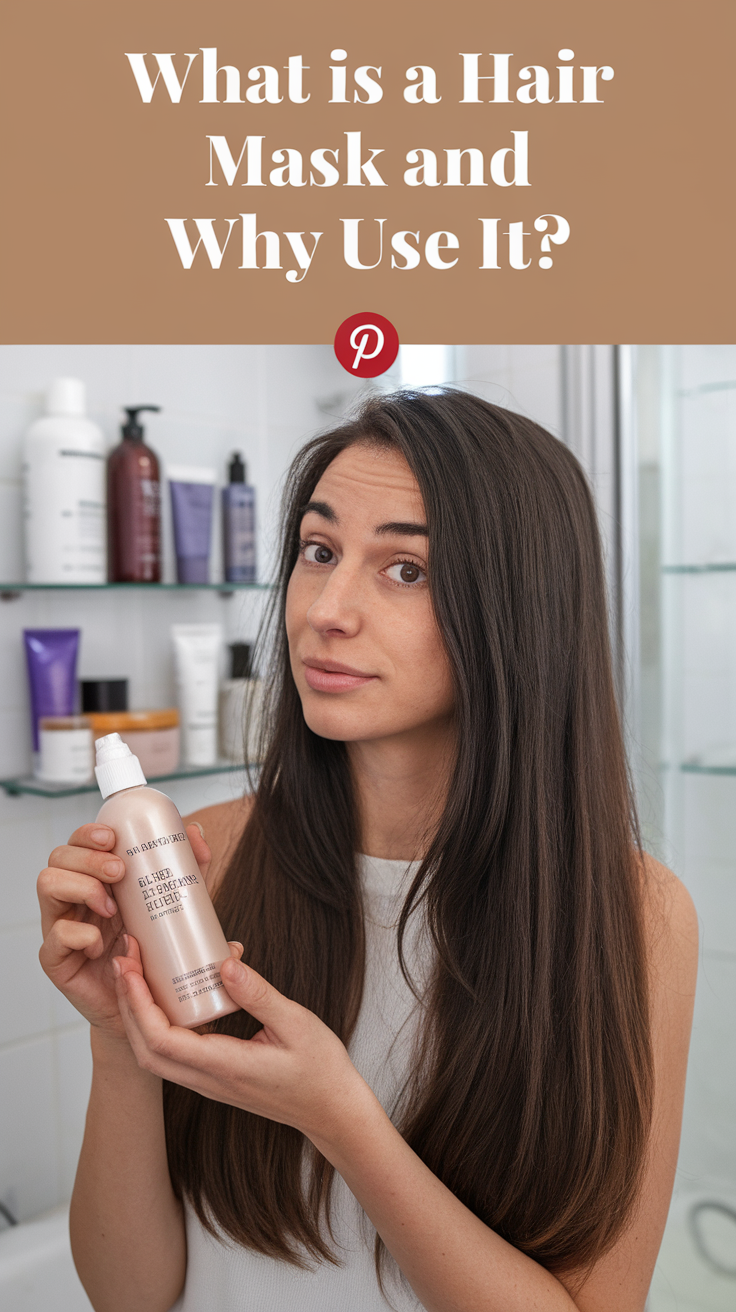How to Use a Hair Mask for Maximum Benefits
Every hair enthusiast knows the struggle of maintaining healthy, shiny locks. On my own journey to healthier hair, I discovered the transformative power of hair masks. They can take your hair from dry and damaged to smooth and hydrated—if used correctly. Let’s dive into how to use a hair mask effectively and ensure you get the best results every time.
What Is a Hair Mask and Why Is It Essential?
Hair masks are intensive treatments packed with rich nutrients that repair, hydrate, and restore hair. Unlike conditioners, which work on the hair’s surface, masks deeply penetrate the shaft, targeting specific problems.

Key Benefits of Hair Masks:
| Benefit | What It Does |
|---|---|
| Intense Hydration | Restores moisture to dry, brittle hair |
| Damage Repair | Mends split ends and strengthens strands |
| Frizz Control | Smooths cuticles for sleek, shiny hair |
| Scalp Health | Soothes and nourishes the scalp |
How to Use a Hair Mask: Step-by-Step Guide
Using a hair mask is simple when you follow the right steps. Based on my experience, these steps ensure the best results:
Step 1: Choose the Right Hair Mask
- Dry Hair: Look for masks with shea butter, argan oil, or aloe vera.
- Damaged Hair: Protein-based masks with keratin or amino acids.
- Color-Treated Hair: Products with color-protecting ingredients.
- DIY Options: If you prefer natural solutions, try a homemade avocado or egg-based mask.
Step 2: Prep Your Hair
- Wash your hair with shampoo to remove buildup. A clean base allows the mask to penetrate better.
- Towel-dry your hair until it’s damp but not dripping.
Step 3: Apply the Mask
| Hair Type | Where to Focus Application |
|---|---|
| Oily Hair | Apply mid-length to ends only |
| Dry/Damaged Hair | Full coverage, including scalp |
| Thick/Curly Hair | Section hair for even application |
- Divide your hair into manageable sections.
- Using your fingers or a wide-tooth comb, apply the mask generously from mid-lengths to ends.
Step 4: Let It Sit
- Follow the product’s recommended duration, usually 5–30 minutes.
- For extra benefits, wrap your hair in a warm towel or shower cap. Heat enhances absorption.
Step 5: Rinse and Style
- Rinse thoroughly with lukewarm water to avoid buildup.
- Proceed with your usual styling routine. Your hair will feel softer and more manageable immediately!

How Often Should You Use a Hair Mask?
Frequency depends on your hair type and condition:
| Hair Type | Recommended Frequency |
|---|---|
| Dry or Damaged Hair | 1–2 times per week |
| Normal Hair | Once a week |
| Oily or Fine Hair | Every two weeks to avoid buildup |
DIY Hair Mask Recipes
For those who prefer natural remedies, try these simple recipes:
Avocado Hydrating Mask
Ingredients: 1 ripe avocado, 2 tablespoons honey, 1 tablespoon coconut oil
Instructions: Mash avocado, mix with honey and coconut oil, and apply to damp hair. Leave for 20 minutes and rinse.
Protein Repair Mask
Ingredients: 1 egg yolk, 2 tablespoons olive oil
Instructions: Whisk together and apply to hair for 15 minutes before rinsing.
Frizz Control Banana Mask
Ingredients: 1 banana, 1 tablespoon almond oil
Instructions: Blend until smooth, apply for 30 minutes, then rinse.
Common Mistakes to Avoid
To get the most from your hair mask, avoid these common pitfalls:
- Using the wrong mask for your hair type.
- Applying too much product, which can lead to greasiness.
- Leaving the mask on longer than recommended, especially protein masks, which can cause stiffness.
- Not rinsing thoroughly, leaving residue that weighs hair down.
Conclusion
Using a hair mask is a game-changer for anyone looking to improve their hair’s health and appearance. Whether you choose store-bought products or homemade remedies, following these steps and tips will ensure maximum results. So why wait? Treat your hair to the care it deserves today, and enjoy softer, shinier, and healthier locks!
FAQs
H3: 1. Can I leave a hair mask on overnight?
Yes, but only with hydrating masks designed for prolonged use. Avoid leaving protein masks on overnight, as they may stiffen the hair.
H3: 2. Should I use a hair mask on dry or wet hair?
Most masks are applied to damp, towel-dried hair. However, oil-based masks work better on dry hair.
H3: 3. Can I replace conditioner with a hair mask?
No. Hair masks are deep treatments and not meant for daily use like conditioner.
H3: 4. Are hair masks safe for extensions or chemically treated hair?
Yes, but use masks specifically designed for treated or extended hair to maintain bonds and health.
H3: 5. How do I know if my hair needs a mask?
Signs include dryness, brittleness, lack of shine, or difficulty managing frizz.

